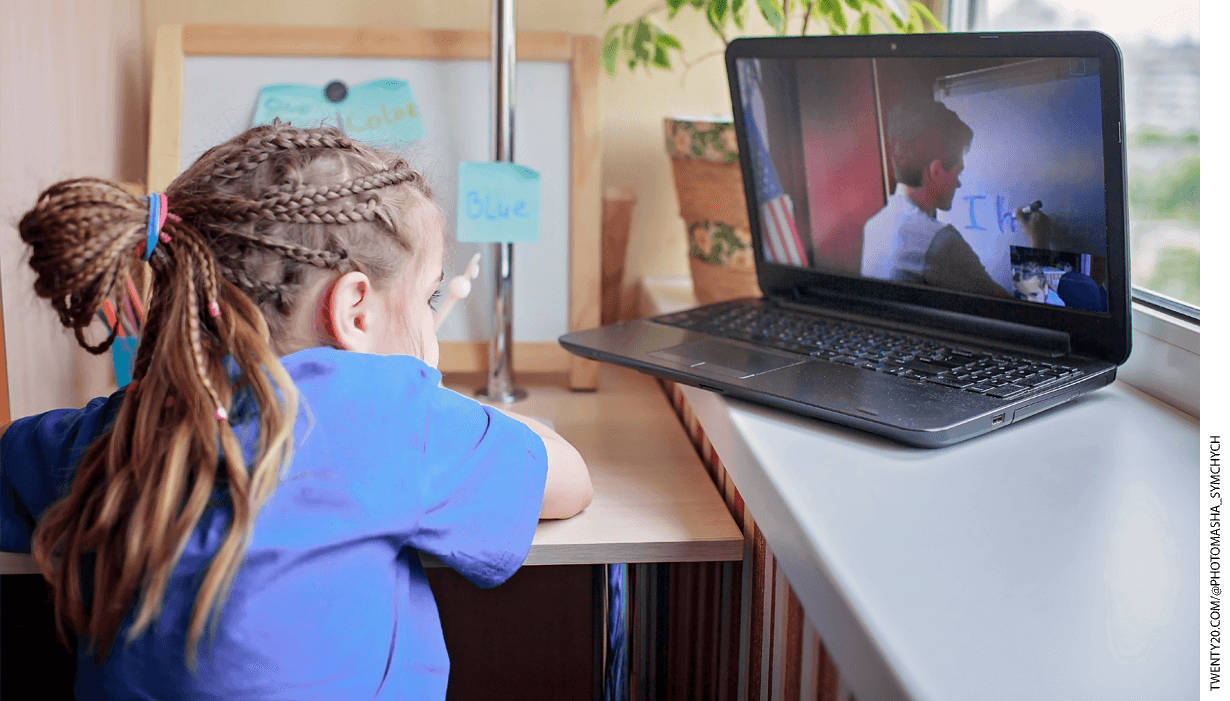
This fall, in many (or most) places, schools will operate in some form of hybrid model. Students will likely attend school for portions of the week or a shortened school day, meaning that remote learning will continue to be part of the picture. That is sure to summon frustrated sighs from parents, students, and educators who emerged from this spring deeply disenchanted with remote education. Despite the valid concerns and obvious challenges, too much of the discussion about distance education has featured bland assertions that schools just need to do it “better.”
Truly doing remote learning better will require much more than platitudes about additional training and better tech; it’ll require rethinking how educators go about their work. Beyond all the practical questions about access, devices, and curricula, what matters most will be what teachers and school staff actually do with their time.
After all, teachers perform scores of tasks in the course of a typical school day. They lecture. They facilitate discussions. They grade quizzes. They fill out forms. They counsel distraught kids. When I ask teachers to list what they do in a typical day, it’s no trick at all for a group to quickly generate a list of 60 or more tasks. Recent research by Matt Kraft and Manuel Monti-Nussbaum on Providence, Rhode Island shows just how many disruptions teachers really encounter—with local teachers suffering 2,000 interruptions a year, costing nearly two weeks of class time.
No one believes that all the tasks teachers perform are equally valuable—nor that all of these tasks benefit equally from hand-on-shoulder interaction. Yet, when I work with teachers, they almost invariably report that they’ve never been part of a disciplined effort to unpack what they do each day in order to focus more energy on the things that matter most.
While always significant, the importance of distinguishing high-value from low-value work grows exponentially when we introduce remote learning, where teacher interaction with students has been slashed. It’s a mistake to spend class time doing things that can be done just as well remotely. If teachers only have limited time in classrooms—or online chats—with a student, it’s vital that the time be used wisely and for things that really benefit from face-to-face intimacy.
After all, relationships are much more important for some instructional tasks than for others. For instance, assessing a child’s grasp of math operations works pretty well as an automated task. Figuring out where a kid is stuck, though, benefits immensely from direct student-teacher interaction. And, when a student is growing frustrated with a tricky idea, in-person contact can make a huge difference.
I’ll try to be a little more concrete: Consider a middle school language arts class. There are books to read. These can be read remotely. There are quizzes to give. These can be administered and graded remotely. There are essays to write, critique, and discuss. Such work can benefit enormously from one-on-one conversation, ideally in person—but with tele-sessions a workable facsimile. There are conversations to be had and reading strategies to be taught and explored; things that lend themselves to in-class discussion. Depending on pedagogy and context, this breakdown may be all wrong. That’s fine. The key is to develop a coherent vision of what gets done where and why.
As schools try to accommodate staff who are at heightened risk from COVID-19, thoughtfully design hybrid programming, and provide students with the supports they need, this kind of deliberate unpacking can help faculty succeed—and provide students with more of what they need. It may mean designating one teacher as the homework coach tasked with supporting students while they’re at home so that in-school teachers can focus on lesson planning and in-person instruction.
By the way, given concerns about student well-being and social-emotional health, note that all this applies equally to nurses and counselors. A counselor may be hugely effective at helping a student with scheduling or CTE requirements via virtual sessions; the story is different when a student is dealing with emotional trauma. Handing paperwork and routine duties off to dedicated remote staff can allow in-school staff to offer students relationship-based support.
None of this is uniquely about the response to COVID-19. This is really just about good teaching and organizing schools to serve students—something I fear gets far too little attention. Even before the pandemic, we needed to unpack and rethink what we’re asking educators to do. Now, it’s taken on an even greater import.
Frederick Hess is director of education policy studies at AEI and an executive editor of Education Next.
This post originally appeared on Rick Hess Straight Up.
Read more from Education Next on coronavirus and Covid-19.


